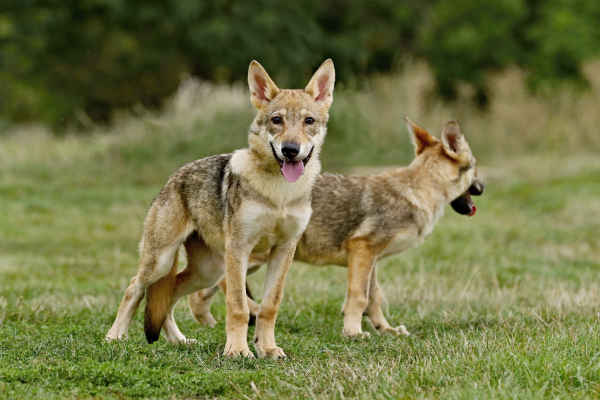Encountering a wolf in the wild: How to deal with such situation?
Wolves belong to the Carnivora order, and the thought of meeting them in the wild scares many of us. It is therefore quite surprising that wolves are very shy and wary animals that will try to avoid human contact at all costs. All the more if the human has a dog with them. We talked with the wolf breeder Jiří Andrle about how realistic it is to meet wolves in the wild and how to react in such situation.


Where can we encounter wolves in the wild?
In our country, wolves are mainly found in Šumava, and in the north, in the Česká Lípa region. The number of packs varies, in some places there are two, in some there is only one.
If we encounter a wolf while strolling in the woods, how should we react?
Encountering wolves is no easy task. They are very shy animals that are afraid of humans. If a wolf does not feel threatened by a human or is not cornered, it will run away. Therefore, when encountering a wolf, it is best to just continue walking and ignoring the wolf. A wolf will not attack a human. There are no such cases known, certainly not in Europe.
Is there any guaranteed advice on how to avoid wolves?
No advice or much is needed really, wolves are shy animals, and encountering them or seeing them in the wild is very rare. Moreover, they are nocturnal animals and sleep through most of the day. Even the experts who are looking for them use camera traps, because it is so difficult to see them with the human eye. So the best advice is not to give the wolves a sense of danger and to continue walking in peace.
Is there a real fear that wolves will get closer to villages or town dwellings?
Not at all, wolves will avoid all places where they can smell humans. They would only approach gardens and homes if they smelled a female dog, but if they smelled a male dog or a human, they would withdraw. Only wolves crossbred with dogs could be an exception, but purebred wolves are such shy animals that they always go after the easiest prey. Fearing attacks on villages is baseless, and building walls and fences is useless simply because such barriers would be playfully skipped and overcome by wolves. But, as I said, their own fear prevents them from doing so in the first place.
Is it a good idea to try feeding wolves? Are there any risks involved for humans?
This certainly is not a good idea. Even in this case, people should stick to the rule that unfamiliar animals should not be fed in any way. Wild wolves would not take any food from a stranger anyway, as they are very vigilant and clever.
Is it possible to determine when a wolf is more likely to be seen in nature?
Wolves move especially in the dark, i.e. very early in the morning or late in the evening. But, as I said, it is very difficult to see a wolf with the naked human eye, they are shy and have a great sense of smell. Once they smell a human, especially if they have a dog with them, they run away.
What reaction can be expected if we came across a wolf while walking a dog?
The most likely response is an escape, but if the human had a female dog in heat, the wolf could start approaching her. However, the wolf would still fear the human that is with the dog, so there would most likely be no contact anyway.
If we encounter a wolf in the wild, is it necessary to report the encounter somewhere, even if there was no incident?
It is certainly not an obligation, but it can help some organizations or conservationists, although most of them, of course, have a good overview of the movement of all the packs. They have detailed records even of wolves who have been bred in captivity, despite them being from generations of wolves that are accustomed to humans to such an extent that they are partly like dogs and take their owners as members of the pack.

